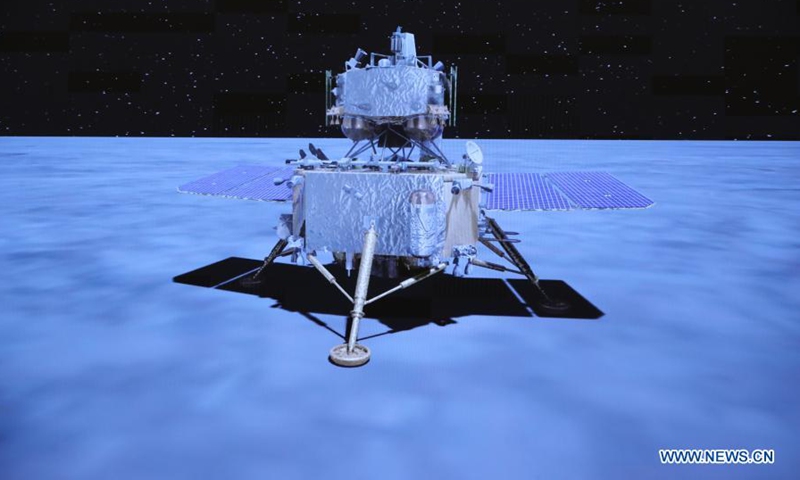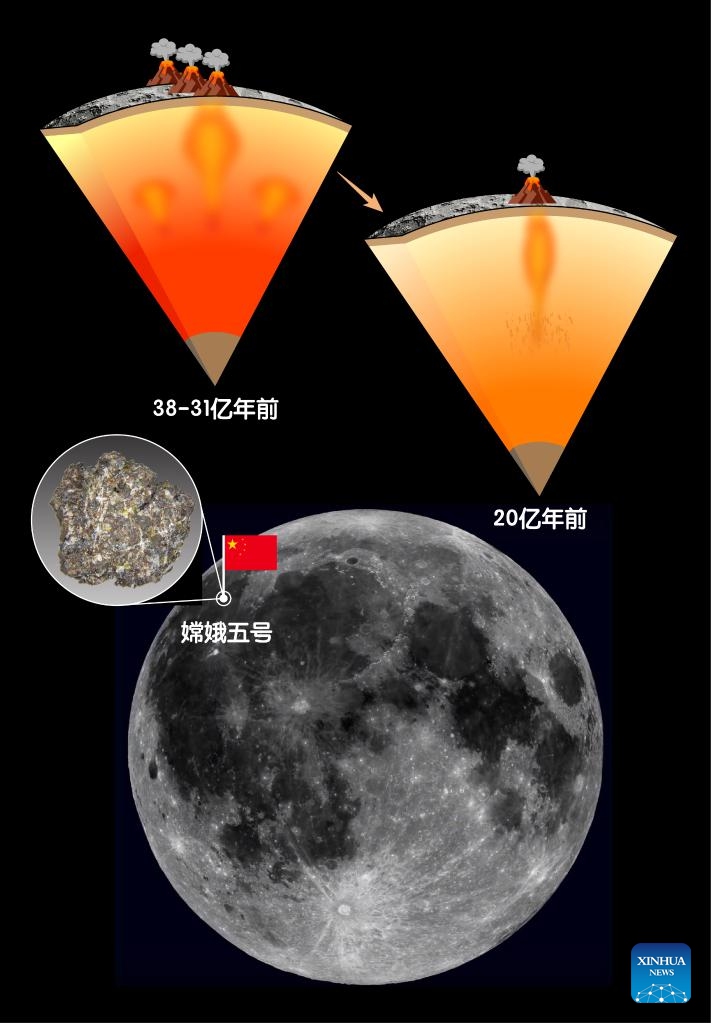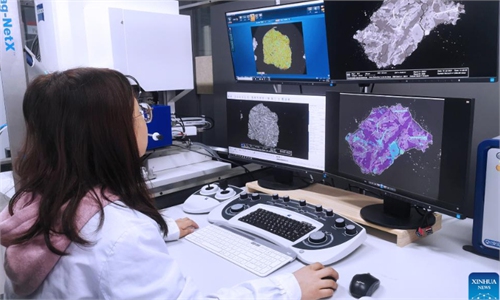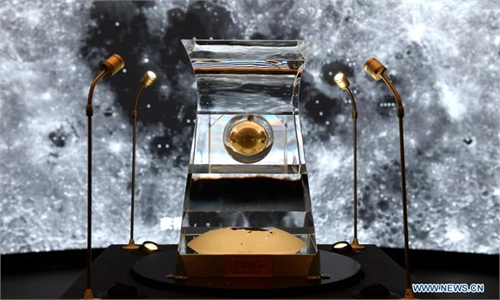
This image taken from video animation at Beijing Aerospace Control Center (BACC) on December 2, 2020 shows Chang'e-5 spacecraft landing on the moon. Photo: Xinhua
China plans to carry out exploration of the sun and hopes to send a probe to the edge of the solar system, China's lunar exploration chief designer Wu Weiren said in a recent interview when talking about the country's future plans for deep-space exploration.
Wu said that the planetary exploration project is now focused on Mars, and China plans to collect soil samples from the red planet and return in the next 10 to 15 years, according to a report of the Xinhua News Agency on Thursday. Wu also noted that China still plans to carry out interplanetary exploration of Jupiter and Uranus.
China will also develop "a heavy-lift launch vehicle with a takeoff thrust of about 4,000 tons" to send astronauts to the Moon and Mars, Wu said.
The country is making preparations for a planetary defense capability, and is preparing to carry out a planetary defense mission with an overall plan for detection, early warning, disposal and rescue efforts. The objective is to change the orbit of small celestial bodies that could pose a threat to Earth by launching an impactor, according to Wu. China plans to carry out asteroid sampling in the next 10 to 15 years, said Wu.
China has prepared the fourth stage of the lunar exploration program, including Chang'e-6, Chang'e-7, and Chang'e-8 missions, according to Wu. Chang'e-6 is expected to collect samples from the far side of the moon and bring them back to Earth. If successful, it will be the first time for humankind to complete the mission, Wu noted, according to the report.
The Chang'e-6 mission is scheduled for launch in around 2025 in Wenchang, South China's Hainan Province. After the samples are returned to Earth, systematic and long-term laboratory studies will be carried out, according to Hainan authorities on Friday.

This diagram made on Oct. 20, 2022 shows the moon's thermal and magmatic evolution. A Chinese group analyzed lunar samples returned by China's Chang'e-5 mission and proposed a new mechanism for how young volcanos took shape on the cooling moon 2 billion years ago. Photo: Xinhua
Chang'e-5 brought 1,731 grams of lunar soil from the near side of the moon at the end of 2020, and we hope Chang'e-6 will bring more samples from the far side, with a goal of 2,000 grams, Wu told Xinhua.
Chang'e-7 is scheduled to land on the south pole of the moon, and its major mission will be to conduct a flyover to search for water in the deep caves, said the chief designer.
Chang'e-8 will be launched around 2028, and will form the basis of a scientific research station at the south pole of the moon with Chang'e-7, with a lunar orbiter, lander, rover, a flying vehicle and several other scientific instruments, according to the Xinhua report.
The China National Space Administration (CNSA) on Monday released an action plan to promote a new global partnership for space exploration and innovation, as China is willing to work with space agencies and international organizations worldwide, adhering to the principles of transparency and openness. The action plan was released at the 2022 United Nations/China 2nd Global Partnership Workshop on Space Exploration and Innovation, which ran from November 21 to 24 in Haikou, South China's Hainan Province.
Global Times


